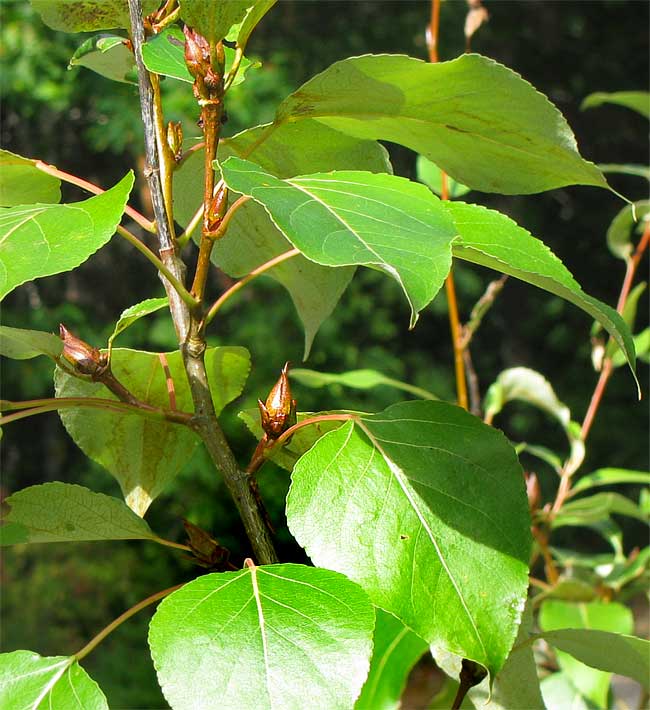Excerpts from Jim Conrad's
Naturalist Newsletter

from the the September 20, 2009 Newsletter, issued from the Siskiyou Mountains west of Grants Pass, Oregon:
SUPER-RESINOUS BUDS
It's not often that a tree draws attention to itself with its buds but that's the case with a certain fast- growing tree in a roadside ditch near here, seen above. Not only are those buds super large but also they're absolutely drippy-gummy with viscous resin, as shown below:

If the leaf shape suggests to you that the tree is a kind of poplar or cottonwood, that's right. This is the Black Cottonwood, POPULUS TRICHOCARPA. When I first saw it and its sticky buds immediately I thought of the closely related Balsam Poplar, but that species isn't found here, being more northern and more prevalent at higher elevations.
Why would a tree produce such resiny buds? The most obvious reason I can think of is to keep bugs from eating them or laying eggs in them, because of the tar-baby effect. I read that in the spring the buds are fragrant with a balsamy scent but the stuff oozing from these buds were neither fragrant nor with much taste.
However, after awhile my mouth did develop a slight tingle, maybe even numbness. This caused me to think that the resin may have medicinal value. On the Internet I found pages selling dormant leaf and flower buds of Black Cottonwood under the trade names of Balm of Gilead Buds and Organic Aspirin. A page explained that the entire poplar genus contains "salicylate precursors" related to aspirin, so "Any ailment helped or relieved by aspirin will probably respond in the same way to the internal use of poplar-bud medication. This includes sore throats, fevers and headaches, as well as arthritis and rheumatism." The site sells six tea bags of Black Cottonwood buds for US $5.50, and half a pound of loose buds for $19.00.
I also read that some people develop the early signs of anaphylactic shock when their skin comes in contact with the buds' resin so one shouldn't just grab a bud and start sucking on it.
Black Cottonwoods can grow 165 ft tall (30-50 m) and can have trunks over 6-½ ft across (2 m). As such, they're the Americas' largest member of the poplar/cottonwood group (the largest species of the genus Populus). They are distributed from Alaska south through here to Mexico's northern Baja California. Mostly they live fairly close to the Pacific, though some small, scattered populations occur eastward as far as North Dakota and Utah.